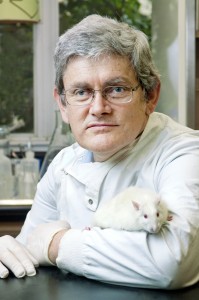An onion a day may keep a cold at bay but also it has the potential to combat obesity, diabetes and an increased blood pressure, according to a new study by University of Southern Queensland (USQ) biomedical scientists.
The study showed that rutin extracted from onions reversed fat stores in laboratory rats, lowered blood pressure, reversed glucose problems and improved liver damage. The USQ research was conducted by Professor Lindsay Brown, Sunil K Panchal, Hemant Poudyal and Thiruma Arumugam and will be published in next month’s prestigious Journal of Nutrition.
Rutin is a non-nutritive component of many foods such as onions, apples, tea and red wine, and has shown health-improving effects in different animal studies but this is the first study concentrating on diet-induced health problems.

The study, led by Professor Brown, involved feeding rats a high carbohydrate, high fat diet for eight weeks until they developed signs of metabolic syndrome, including obesity, hypertension, fatty liver and cardiac stiffness.
The rats given rutin for a further eight weeks improved the structure and function of the heart and liver, together with improved metabolic signs and less abdominal fat compared with rats given the high carbohydrate, high fat diet.
Professor Brown said that anti-inflammatory responses were the key to the positive responses with rutin. Inflammation can induce weight gain as well as damage to the heart and liver,’ he said. ‘We now have scientific evidence that the adverse effects of the high fat diet in these rats were completely reversed by rutin.â€
Professor Brown said he hoped to work with local producers in further research, as well as secure funding for human trials to be conducted What we have found in our rats tells us that rutin could improve the quality and quantity of life in people, with no known side effects,’ he said. ‘While there is still a long way to go with this research, we are encouraged by our findings so far.â€
Professor Brown works in the Department of Biological and Physical Sciences at USQ.
Submitted by
Madeleine.Tiller@usq.edu.au
